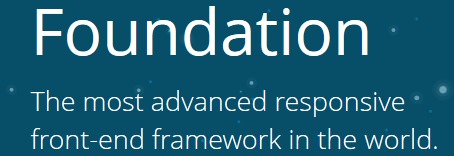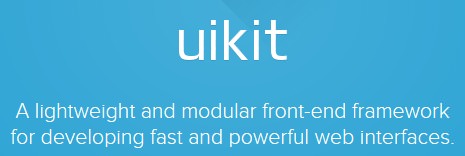When working with a website, it is important to be familiar with all the tools that are needed to make it look its best. These include Frameworks, which are design kits that serve as software support and come with the basic building blocks.
There are different types of frameworks useful and less useful, famous and less famous just to meet all market demands. A framework that is good for us may not be good for many others; for this reason we wanted to create a Top List of 5 Frameworks among the most famous and used ones, tracing for each the advantages and negative aspects among the proposed features.
Bootstrap(getbootstrap.com)
Definitely the most famous front end framework, developed by Twitter. It allows the creation of webpages and layouts through the use of a wide range of graphical, stylistic elements and useful javascript functions by taking full advantage of the potential of HTML5 and CSS3.
Advantages:
- Grid960-based grid system that allows the page to be divided into columns within which content can be placed;
- presence of components such as Dropdown menus, breadcrumbs, pagination, Alerts, labels and badges.
- Basic CSS- icons, images, forms;
- useful javascript functions.
Disadvantages:
- If you want to create a large website with many graphical claims, this framework can be elementary and unarticulated.
Foundation (foundation.zurb.com)
It is another HTML5 front-end framework used by major sites such as National Geographic. Its service provides the bare minimum for building a site’s grids even for mobile, giving the ability to bring to life countless layouts
Advantages:
- animated navigation bar;
- Integrated javascript components for effective slider and gallery implementation;
- grid for creating very precise html structures;
- easy forms due to uniform css rules across browsers.
Disadvantages:
- for management, it is not enough to know how to use css but you must also have knowledge of Sass, a css preprocessor that you need to install on your computer;
- the choice of colors is sometimes complex.
UI KIt(getuikit.com)
It is a lightweight framework for developing attractive, powerful and fast graphics. The whole package offers HTML5, CSS3, JS and simple components for customization and extensibility even on mobile. Advantages:
- open source framework;
- Very light and fast;
- Support for languages written from right to left;
- minified CSS & Javascript
- Easy for Responsive Layout.
Disadvantages:
- Nothing relevant so far
Centurion (jhough10.github.io/Centurion/)
It is an easy and incisive framework based on HTML5 / CSS 3 particularly suitable for those who plan to work on a large project with high design expectations.
Advantages:
- uses Sass, giving the ability to act on files and customize them;
- Easy to use for both desktop and mobile;
- intuitive interface;
- Designs suitable for large web projects;
- Multilingual and complex projects.
Disadvantages:
- Not recommended for small sites or blogs;
Skeleton(getskeleton.com)
It is a simple and intuitive CSS standard framework for HTML5 websites and applications. Created for quick and easy organization even for those new to web design.
Advantages:
- EASY TO USE;
- mobile friendly;
- responsive layout grid;
Disadvantages
- not suitable for large projects
- has no javascript functions
To each his own framework
Our Top 5 can work as a starting point for you to navigate your way through the “magical” world of web design and identify the framework best suited to your needs. Certainly, there are many others to consider, perhaps even richer than those just listed or better suited to the way you work.
Do you use a Framework among those we have listed? Would you like to add others?




